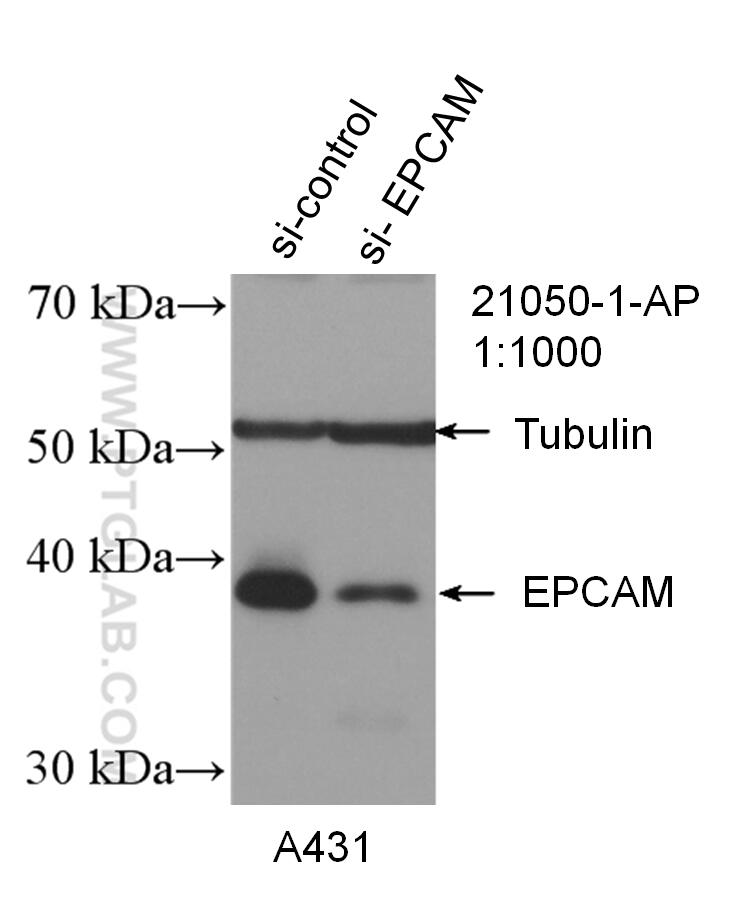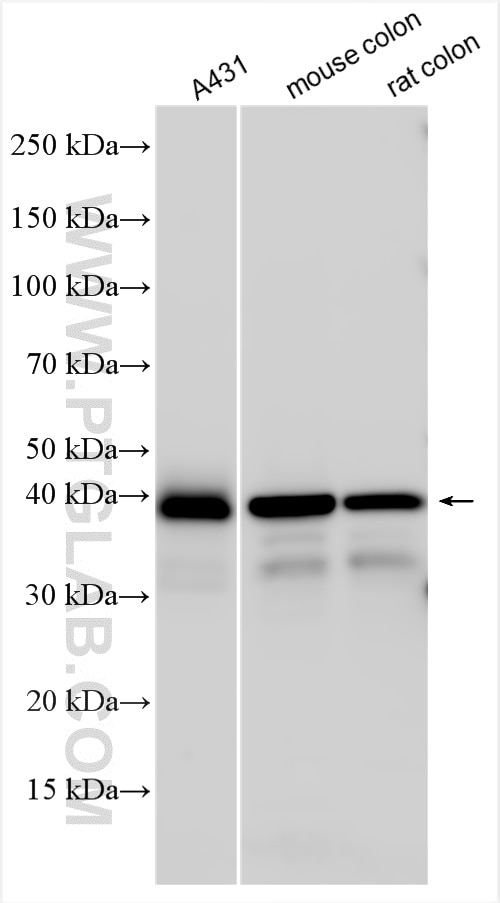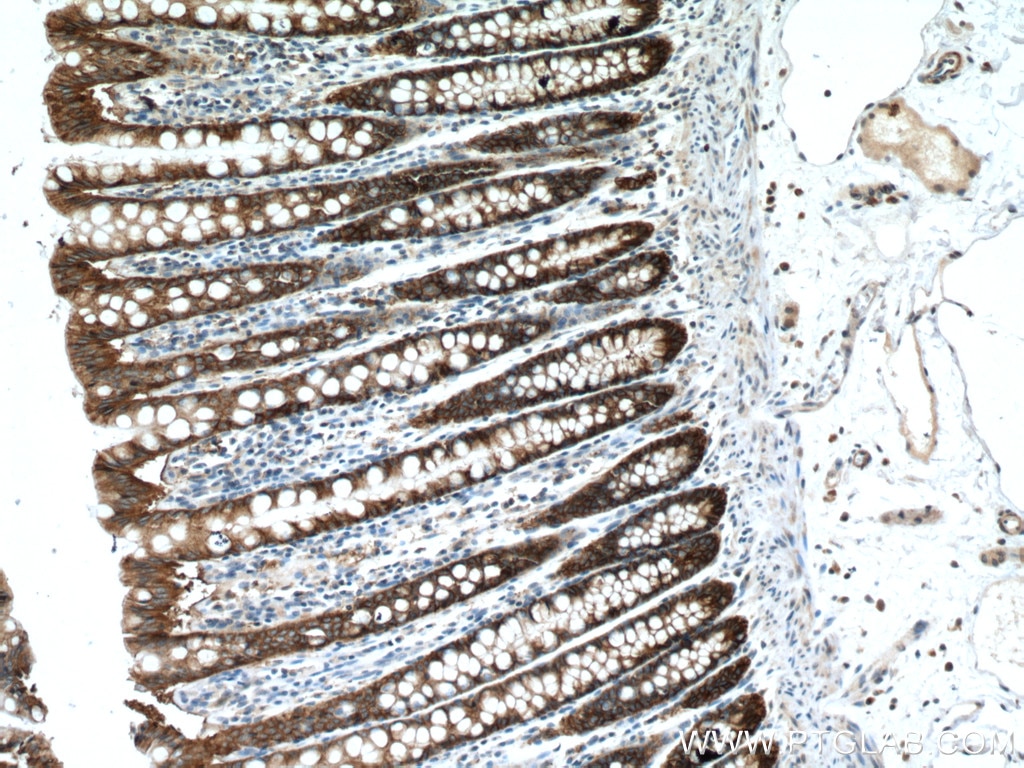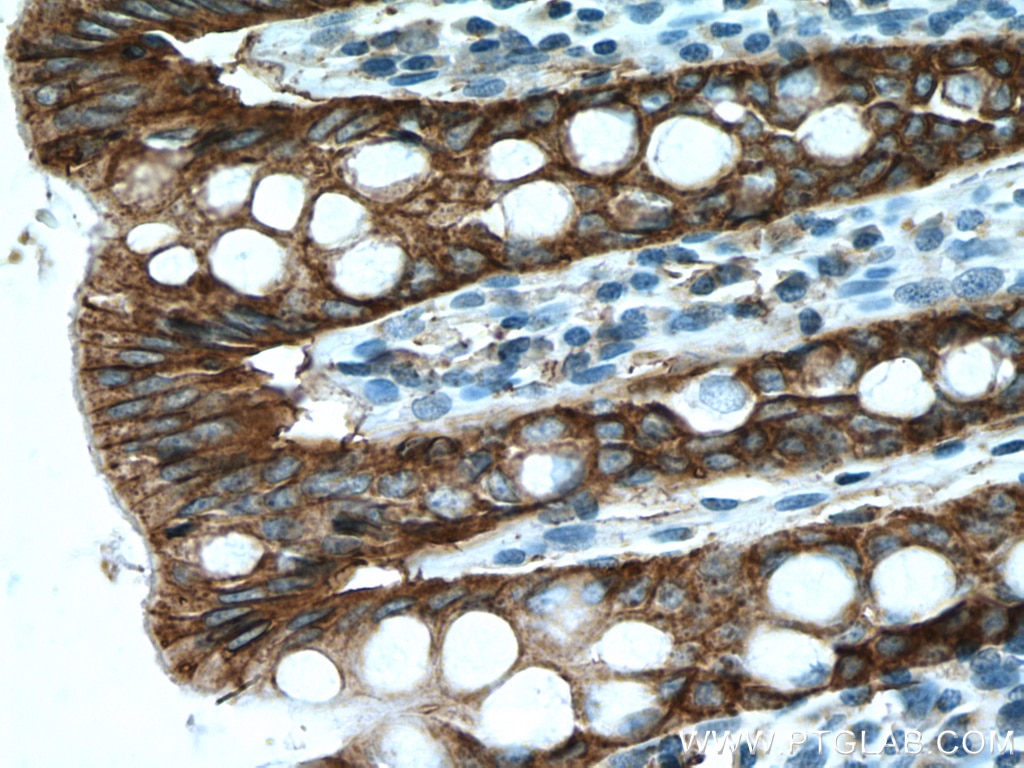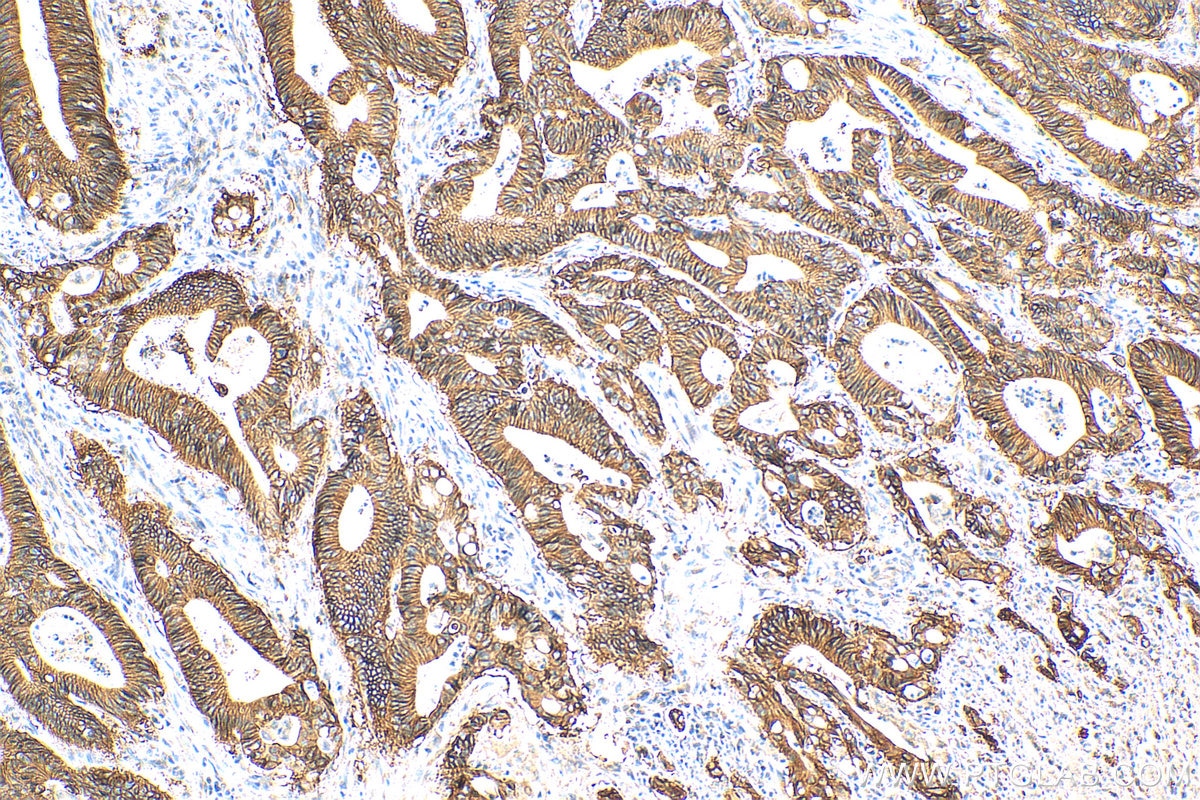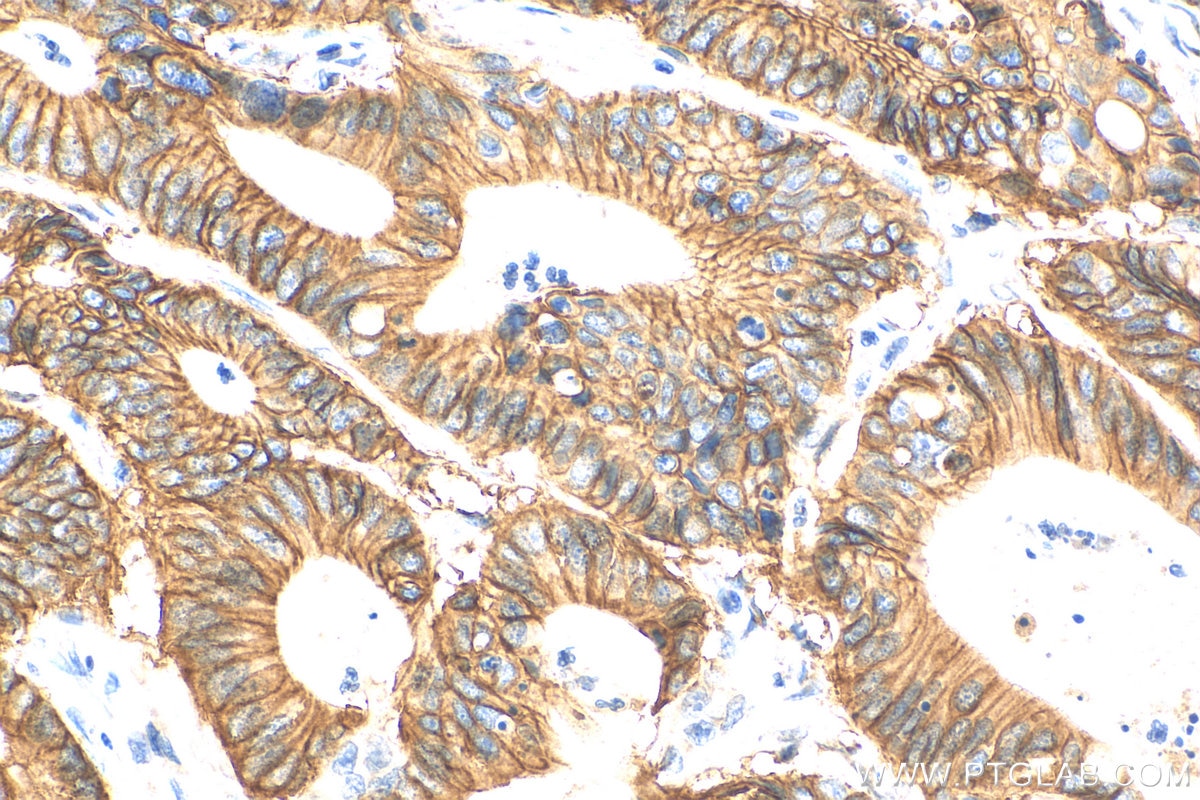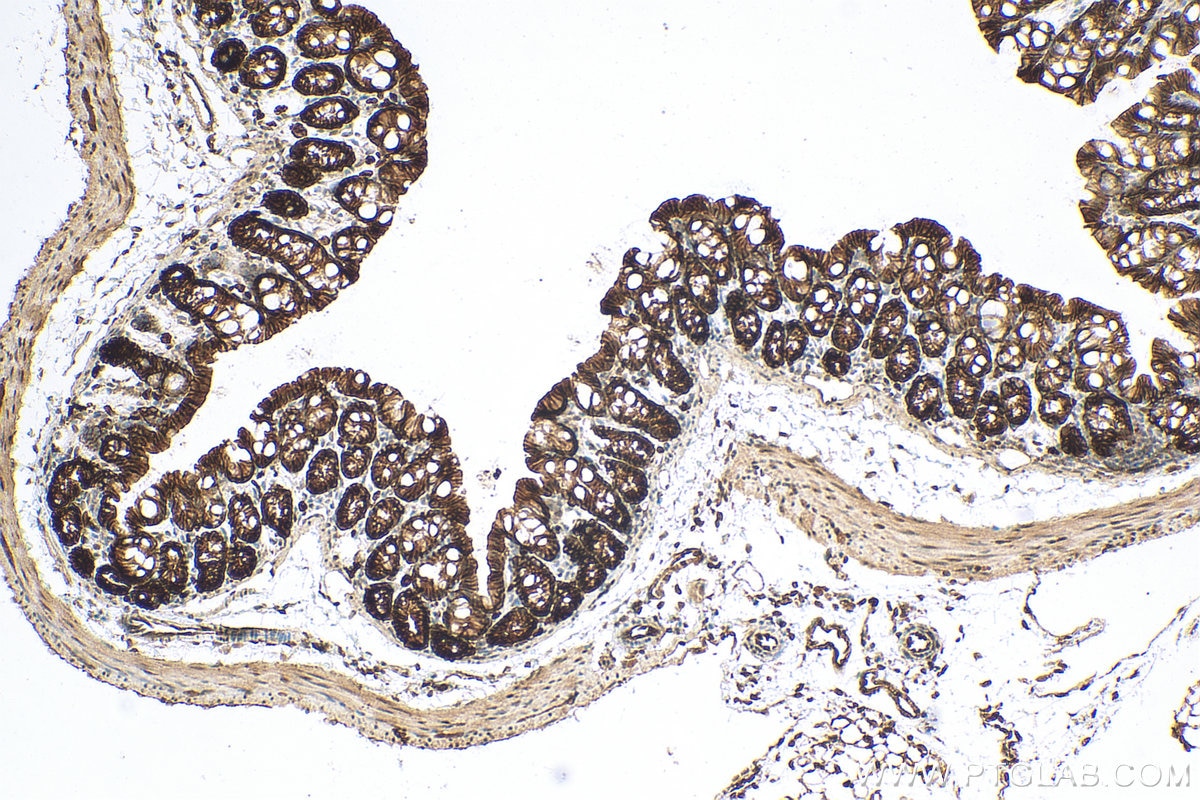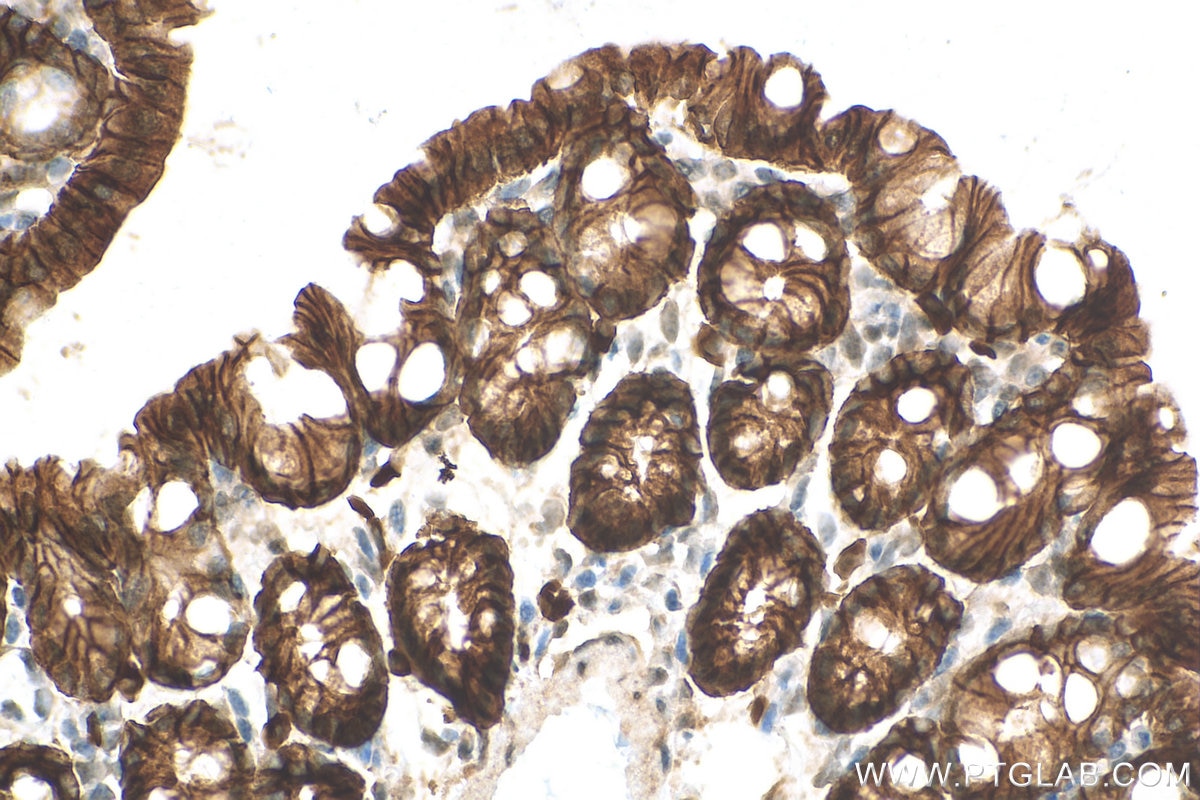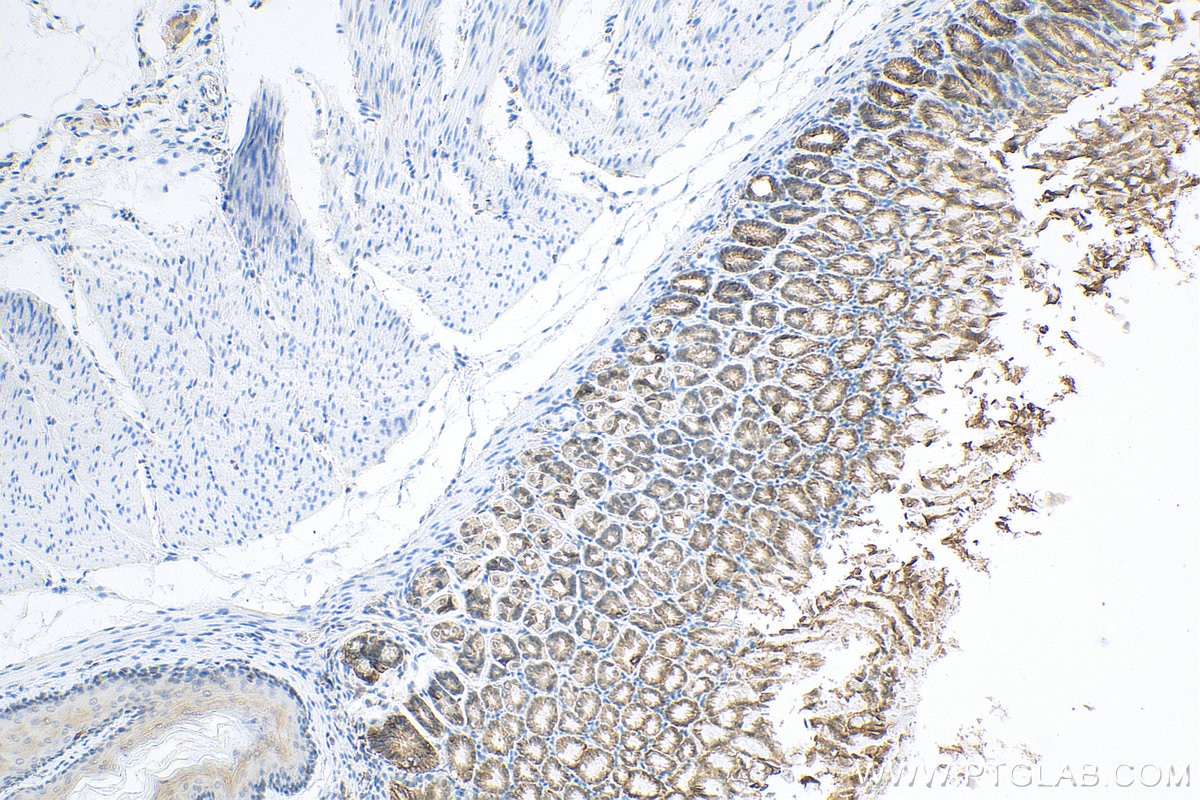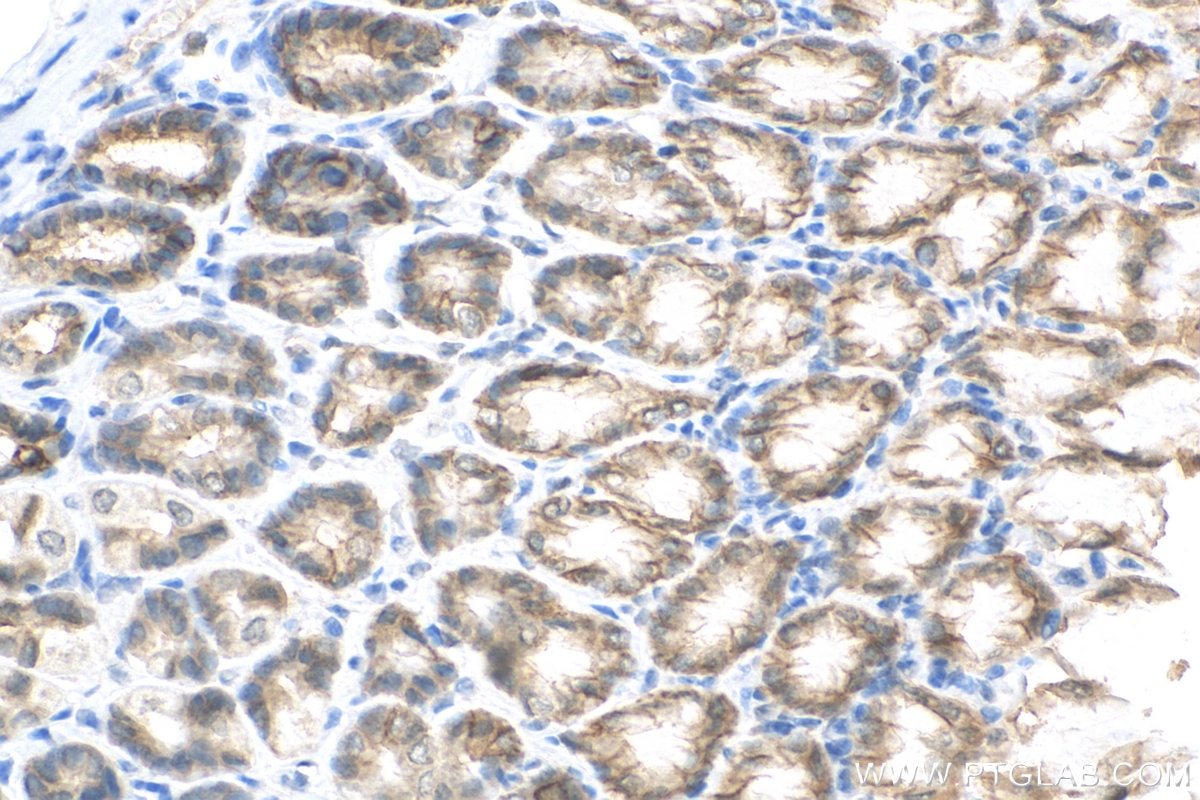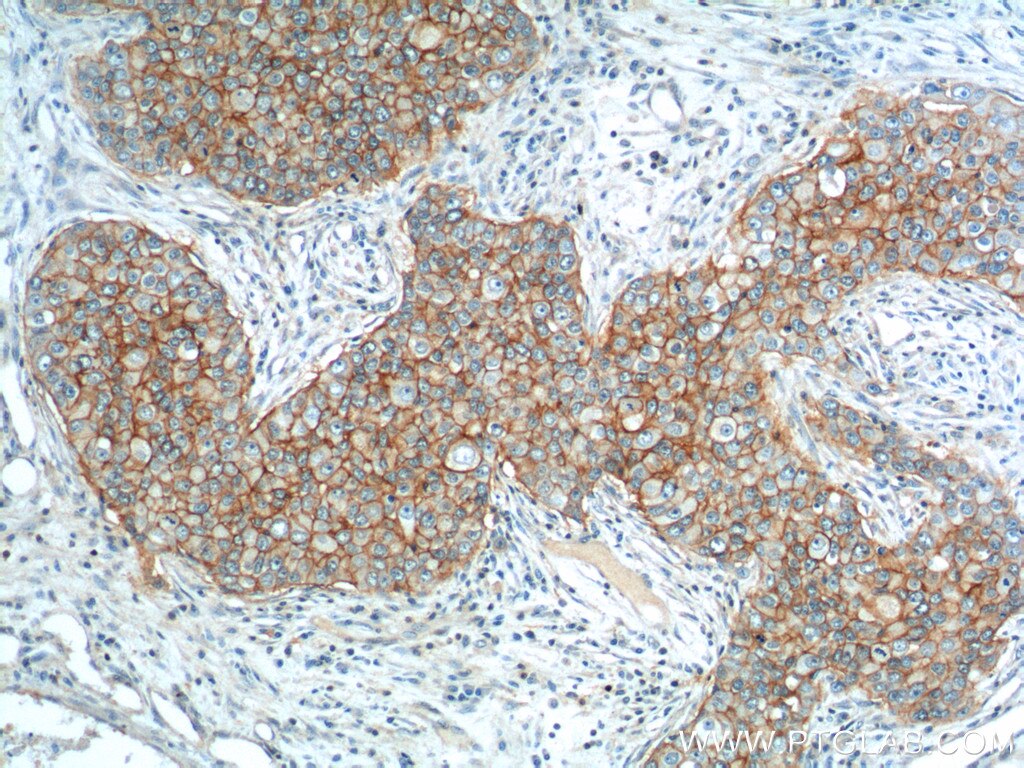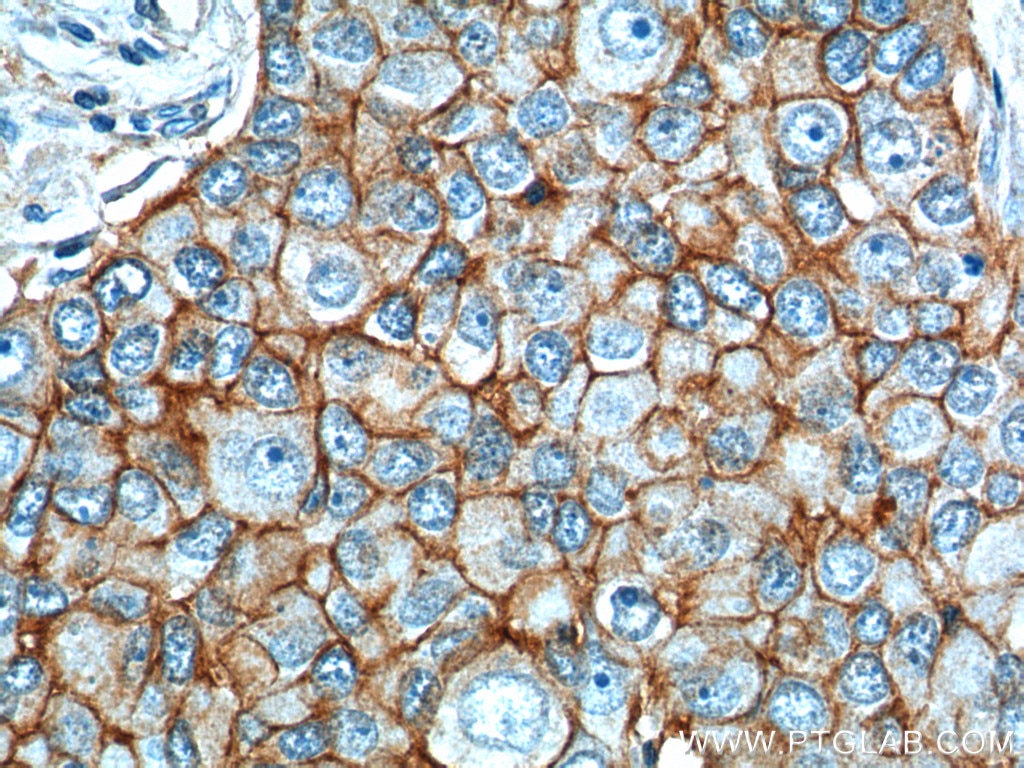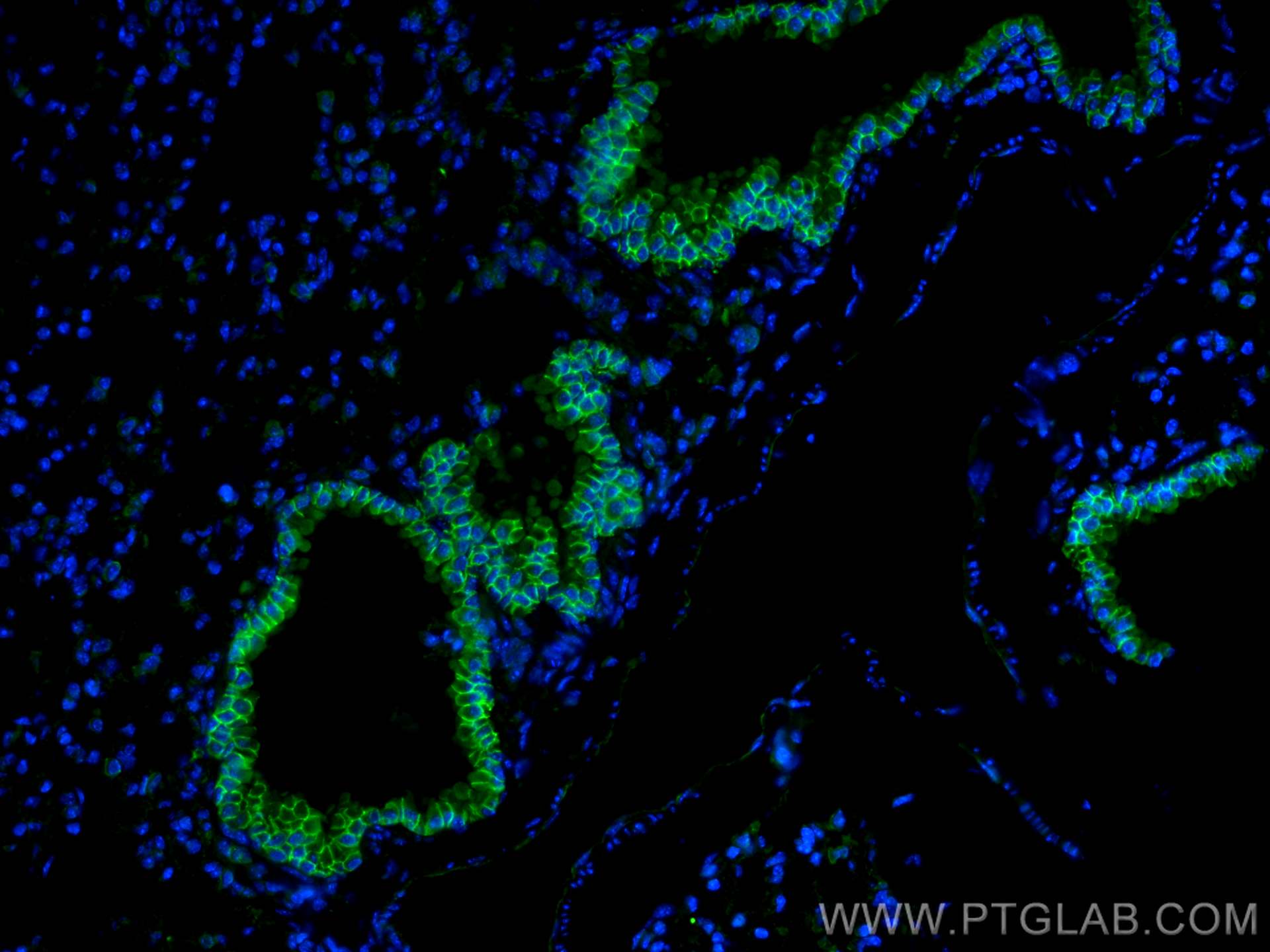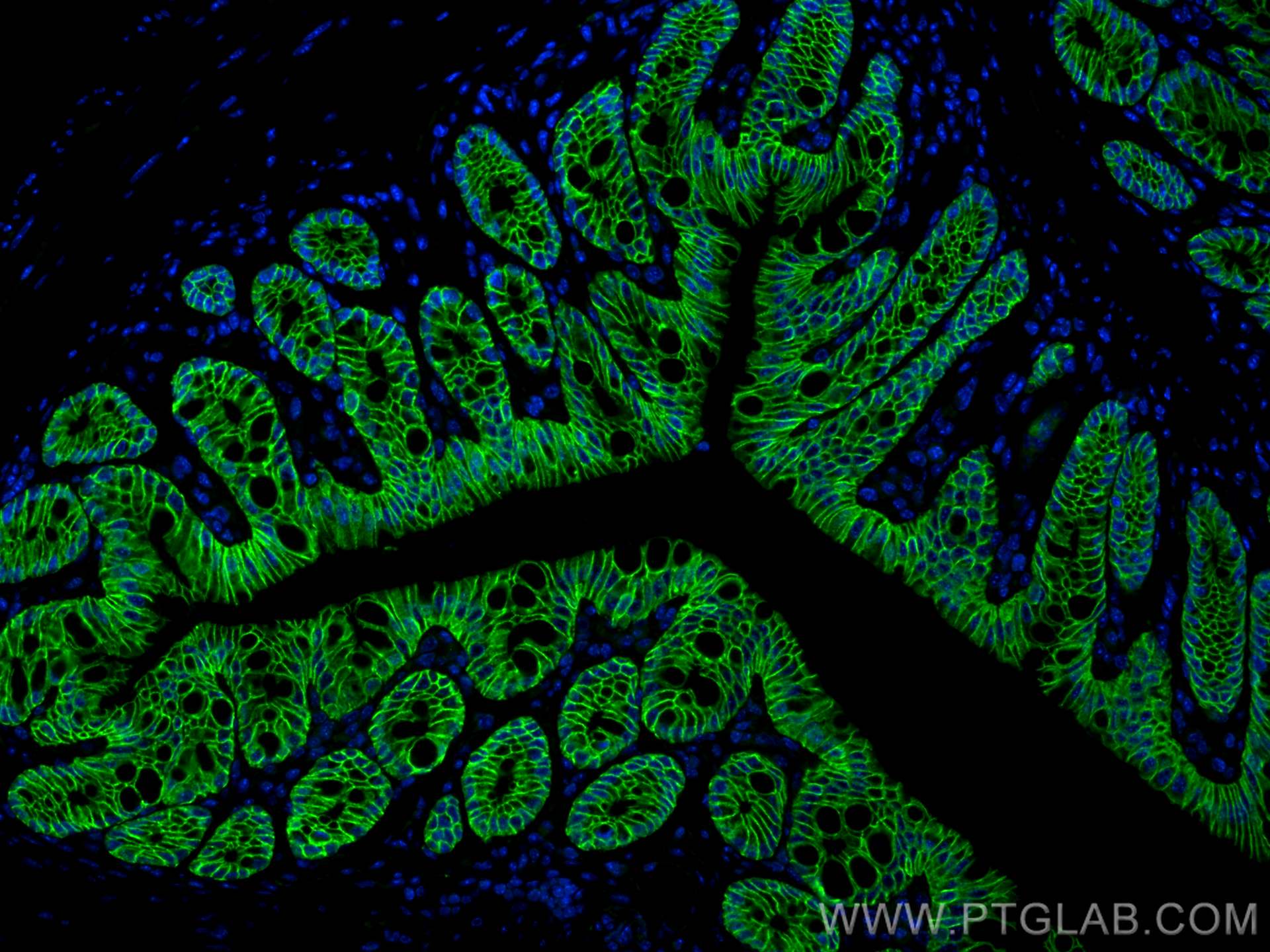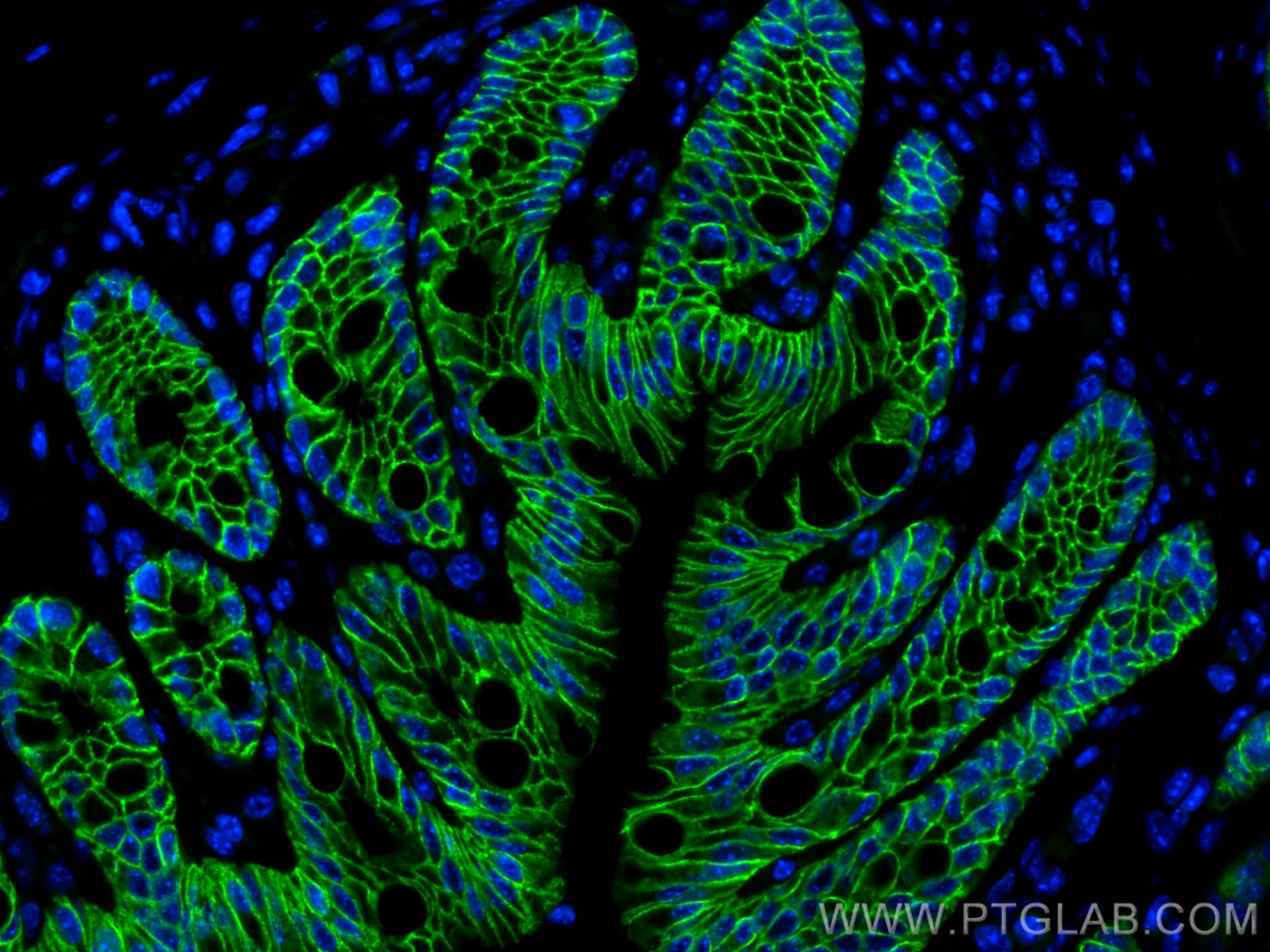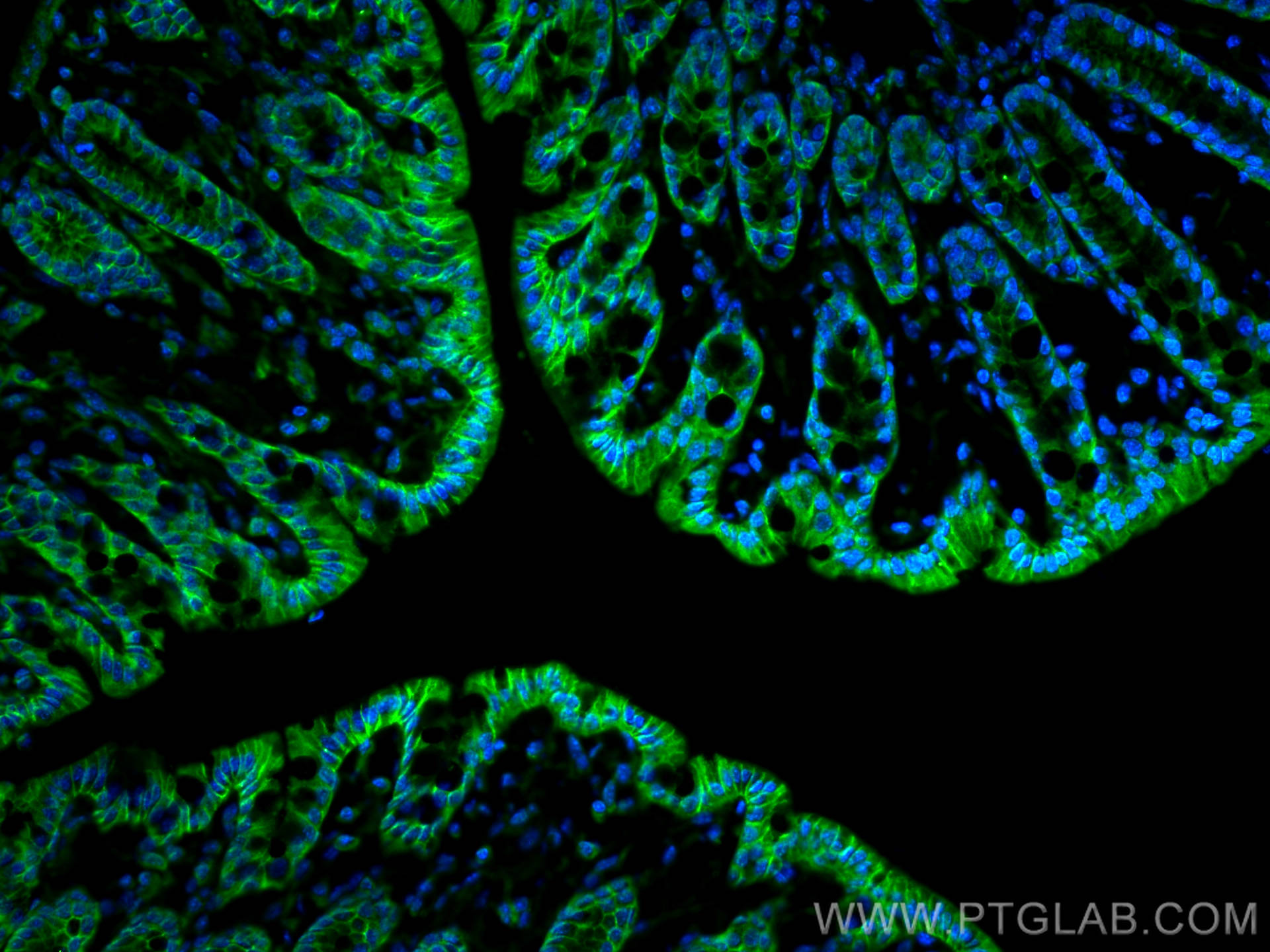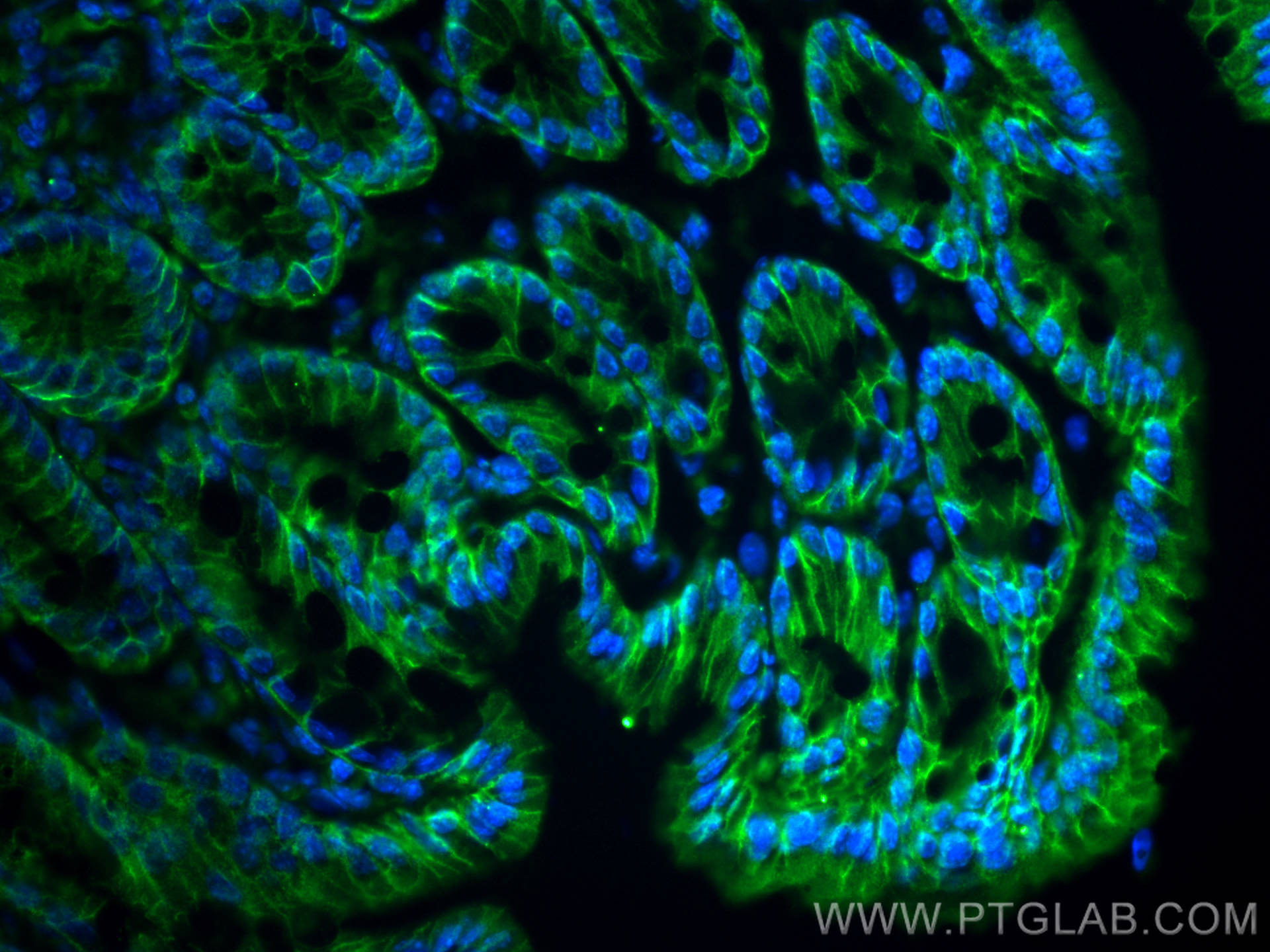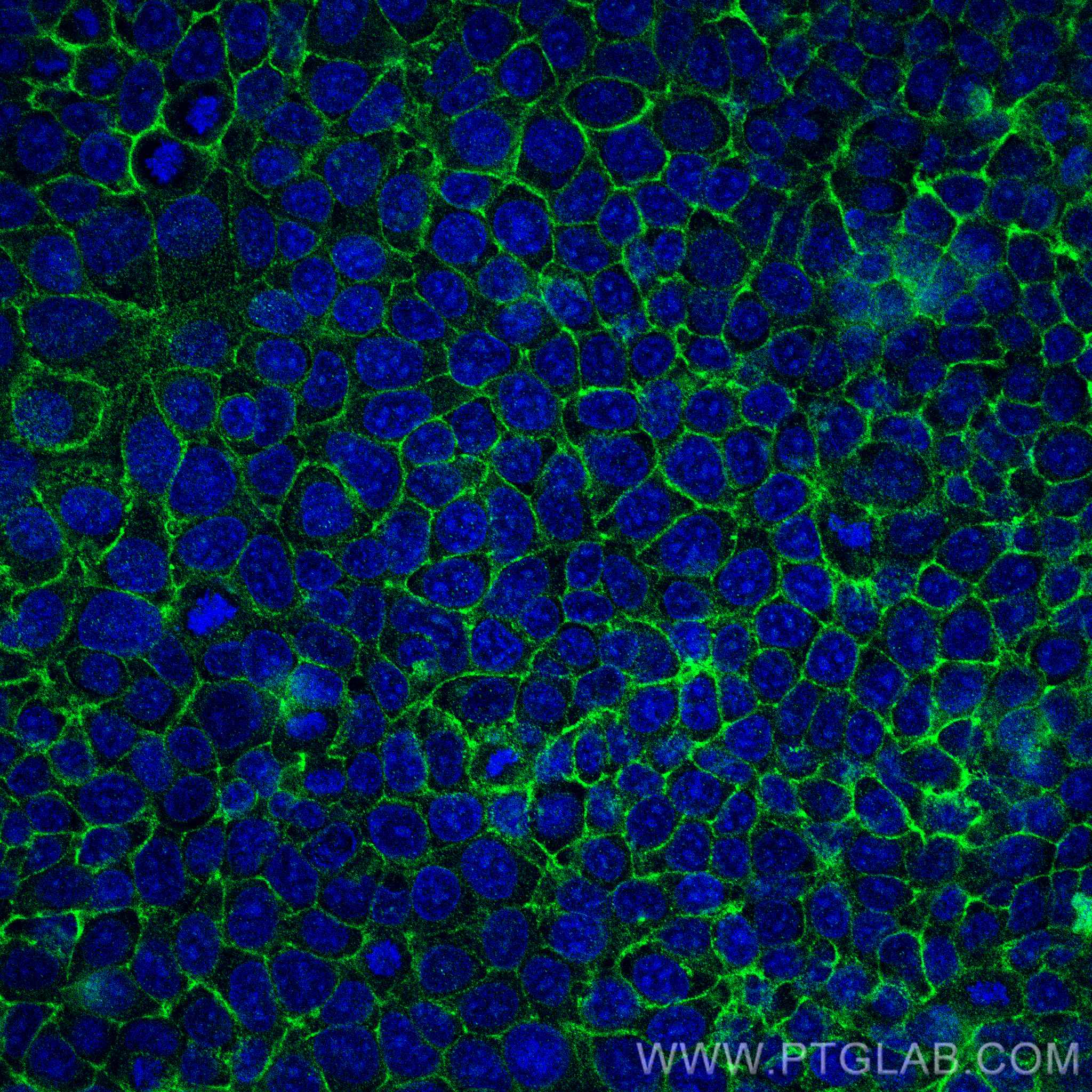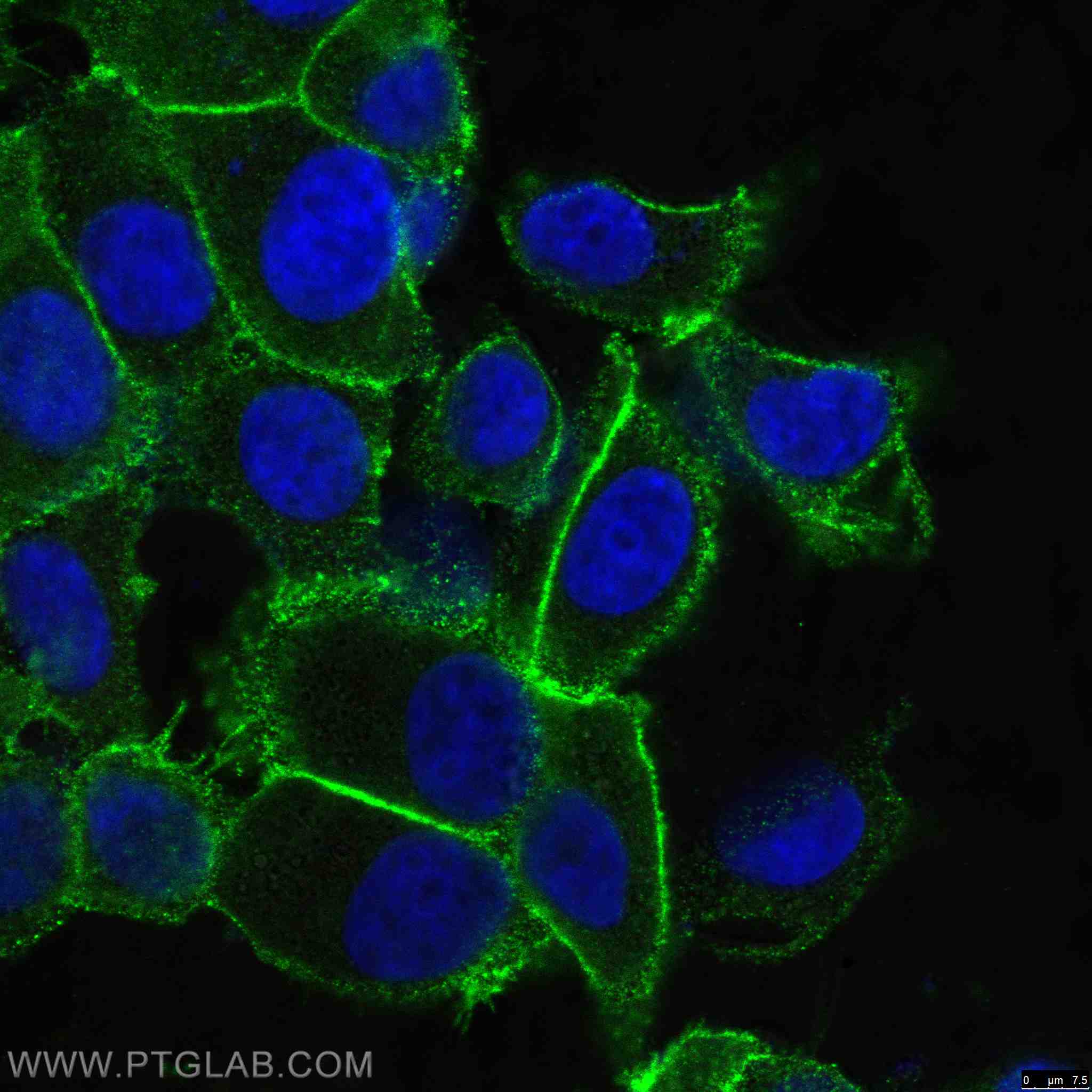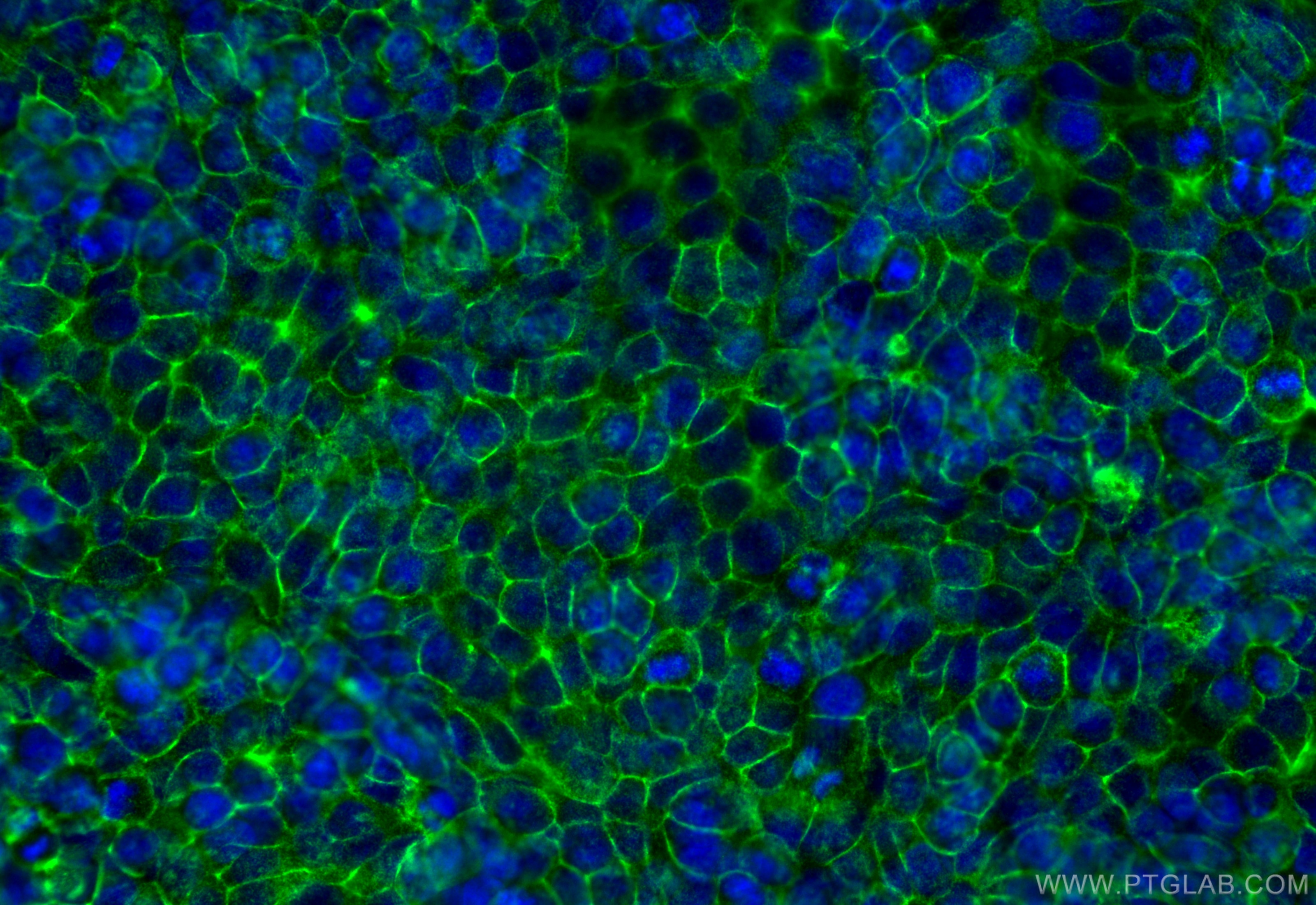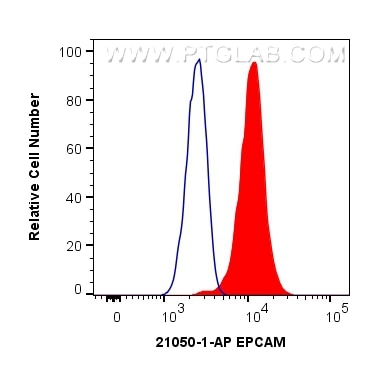- Featured Product
- KD/KO Validated
EPCAM/CD326 Polyklonaler Antikörper
EPCAM/CD326 Polyklonal Antikörper für WB, IHC, IF/ICC, IF-P, IF-Fro, FC, ELISA
Wirt / Isotyp
Kaninchen / IgG
Getestete Reaktivität
human, Maus, Ratte und mehr (2)
Anwendung
WB, IHC, IF/ICC, IF-P, IF-Fro, FC, IP, chIP, ELISA
Konjugation
Unkonjugiert
Kat-Nr. : 21050-1-AP
Synonyme
Geprüfte Anwendungen
| Erfolgreiche Detektion in WB | A431-Zellen, Maus-Kolongewebe, Ratten-Kolongewebe |
| Erfolgreiche Detektion in IHC | humanes Kolonkarzinomgewebe, humanes Mammakarzinomgewebe, humanes Kolongewebe, Maus-Kolongewebe, Maus-Magengewebe Hinweis: Antigendemaskierung mit TE-Puffer pH 9,0 empfohlen. (*) Wahlweise kann die Antigendemaskierung auch mit Citratpuffer pH 6,0 erfolgen. |
| Erfolgreiche Detektion in IF-P | Maus-Kolongewebe, MCF-7-Zellen, Mauslungengewebe |
| Erfolgreiche Detektion in IF-Fro | Maus-Kolongewebe |
| Erfolgreiche Detektion in IF/ICC | HT-29-Zellen, MCF-7-Zellen |
| Erfolgreiche Detektion in FC | HT-29-Zellen |
Empfohlene Verdünnung
| Anwendung | Verdünnung |
|---|---|
| Western Blot (WB) | WB : 1:2000-1:10000 |
| Immunhistochemie (IHC) | IHC : 1:500-1:2000 |
| Immunfluoreszenz (IF)-P | IF-P : 1:500-1:2000 |
| Immunfluoreszenz (IF)-FRO | IF-FRO : 1:200-1:800 |
| Immunfluoreszenz (IF)/ICC | IF/ICC : 1:50-1:500 |
| Durchflusszytometrie (FC) | FC : 0.50 ug per 10^6 cells in a 100 µl suspension |
| It is recommended that this reagent should be titrated in each testing system to obtain optimal results. | |
| Sample-dependent, check data in validation data gallery | |
Veröffentlichte Anwendungen
| KD/KO | See 2 publications below |
| WB | See 45 publications below |
| IHC | See 17 publications below |
| IF | See 34 publications below |
| IP | See 1 publications below |
| FC | See 2 publications below |
| ChIP | See 1 publications below |
Produktinformation
21050-1-AP bindet in WB, IHC, IF/ICC, IF-P, IF-Fro, FC, IP, chIP, ELISA EPCAM/CD326 und zeigt Reaktivität mit human, Maus, Ratten
| Getestete Reaktivität | human, Maus, Ratte |
| In Publikationen genannte Reaktivität | human, Hausschwein, Hund, Maus, Ratte |
| Wirt / Isotyp | Kaninchen / IgG |
| Klonalität | Polyklonal |
| Typ | Antikörper |
| Immunogen | EPCAM/CD326 fusion protein Ag15393 |
| Vollständiger Name | epithelial cell adhesion molecule |
| Berechnetes Molekulargewicht | 314 aa, 35 kDa |
| Beobachtetes Molekulargewicht | 35-40 kDa |
| GenBank-Zugangsnummer | BC014785 |
| Gene symbol | EPCAM |
| Gene ID (NCBI) | 4072 |
| Konjugation | Unkonjugiert |
| Form | Liquid |
| Reinigungsmethode | Antigen-Affinitätsreinigung |
| Lagerungspuffer | PBS with 0.02% sodium azide and 50% glycerol |
| Lagerungsbedingungen | Bei -20°C lagern. Nach dem Versand ein Jahr lang stabil Aliquotieren ist bei -20oC Lagerung nicht notwendig. 20ul Größen enthalten 0,1% BSA. |
Hintergrundinformationen
Epithelial cell adhesion molecule (EpCAM, CD326) is a type I transmembrane glycoprotein that functions as a homophilic, epithelial-specific intercellular cell-adhesion molecule. In addition to cell adhesion, EpCAM is also involved in cellular signaling, cell migration, proliferation, and differentiation. EpCAM is highly expressed on most carcinomas and therefore of potential use as a diagnostic and prognostic marker for a variety of carcinomas, and has become a therapeutic target. EpCAM may occur in distinct forms due to glycosylation. (PMID: 20837599; 19249674; 21576002; 22647938; 12691820)
Protokolle
| PRODUKTSPEZIFISCHE PROTOKOLLE | |
|---|---|
| WB protocol for EPCAM/CD326 antibody 21050-1-AP | Protokoll herunterladen |
| IHC protocol for EPCAM/CD326 antibody 21050-1-AP | Protokoll herunterladenl |
| IF protocol for EPCAM/CD326 antibody 21050-1-AP | Protokoll herunterladen |
| STANDARD-PROTOKOLLE | |
|---|---|
| Klicken Sie hier, um unsere Standardprotokolle anzuzeigen |
Publikationen
| Species | Application | Title |
|---|---|---|
Mol Cancer m6A methylation reader IGF2BP2 activates endothelial cells to promote angiogenesis and metastasis of lung adenocarcinoma | ||
Cell Metab Nicotinamide metabolism face-off between macrophages and fibroblasts manipulates the microenvironment in gastric cancer | ||
Cancer Cell Loss of Lkb1 and Pten leads to lung squamous cell carcinoma with elevated PD-L1 expression. | ||
Gut Cross-talk between the gut microbiota and monocyte-like macrophages mediates an inflammatory response to promote colitis-associated tumourigenesis. | ||
Autophagy Neutrophil-derived serine proteases induce FOXA2-mediated autophagy dysfunction and exacerbate colitis-associated carcinogenesis via F2RL1/protease-activated receptor 2 |
Rezensionen
The reviews below have been submitted by verified Proteintech customers who received an incentive for providing their feedback.
FH Andrew (Verified Customer) (07-12-2024) | Got a clean band at the desired molecular weight for EPCAM on the first attempt of using this primary antibody for Western Blot. Also, there was very little background. Overall, very happy with this product.
|
